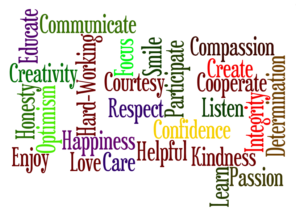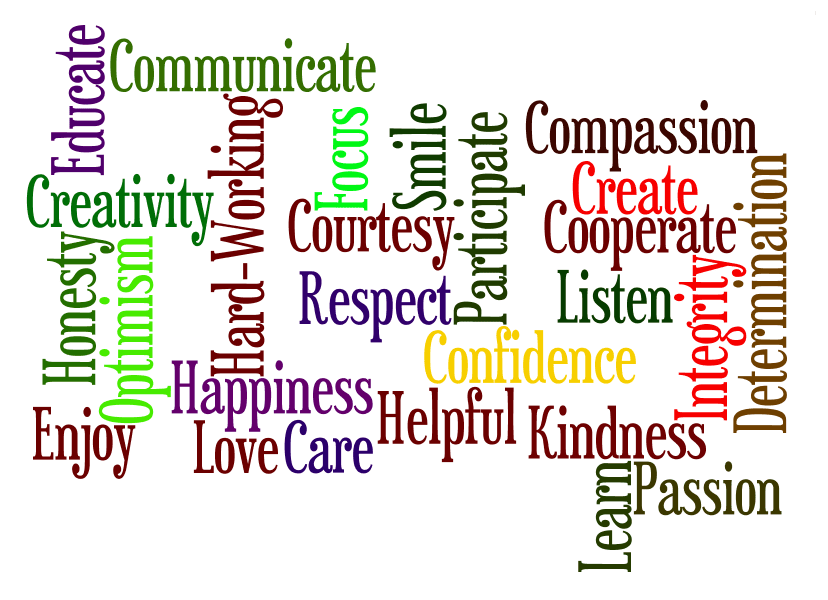Student Contributor: S. Hsu
 Developing rules alongside students is when teachers facilitate a conversation with and among the students to determine moral expectations for the classroom. This tool is helpful because it fosters student ownership in the classroom and responsibility among the students for their behaviors.
Developing rules alongside students is when teachers facilitate a conversation with and among the students to determine moral expectations for the classroom. This tool is helpful because it fosters student ownership in the classroom and responsibility among the students for their behaviors.
This tool should be used at the beginning of the year to set the tone and climate for the classroom. There are many ways to approach this this tool, but for the sake of this article, I will be discussing it in the terms of a student-directed and collaborative sense.
During the activity, the teacher will be acting as a facilitator for the discussion amongst the students. Some teachers, like Levin & Nolan (2014) point out, have some rules already created before starting the process. These pre-created rules help guide the students as they brainstorm and refine the rules they want for their classroom. On the other hand, other teachers freely allow the students to work through the process of creating rules, but reserve the right to nix a rule if deemed necessary.
It is important to keep in mind the rules about making rules! Teachers cannot expect students to know the guidelines around making rules, so it’s essential that teachers discuss them at some point before or during the process. For instance, if the teacher is recording the class-generated rules on a poster or whiteboard, she should positively phrase them. It is pretty typical to hear rules that begin with, “don’t do this…” or “don’t do that…” but, studies have found that positively phrasing expectations is much more effective (Brady et al., 2011). Moreover, there is a chance that students will create 10, 20, or even 30 rules! However, that many rules are not necessary. Rules should be outlining the moral and ethical expectations within the classroom, everything else can fall to procedures. Again, this concept will have to be discussed before or during the process.
 This tool belongs in the preventative phase because it happens before learning. The goal of this tool is to foster a sense of responsibility among the students for their own behaviors. If students feel responsible for their own behavior, and understand the expectations set for them, they will be able to act accordingly. Therefore, having the students work together to make the rules for the classroom is to prevent misbehavior from happening.
This tool belongs in the preventative phase because it happens before learning. The goal of this tool is to foster a sense of responsibility among the students for their own behaviors. If students feel responsible for their own behavior, and understand the expectations set for them, they will be able to act accordingly. Therefore, having the students work together to make the rules for the classroom is to prevent misbehavior from happening.
Despite being a part of the preventative phase, this tool does have a place among the supportive and corrective phase. During the supportive phase, teachers can remind students of the classroom rules and expectations (these reminders are a part of the supportive phase because they happen during learning). In the corrective phase, the rules can be discussed again. Teachers can ask students that misbehaved, “what expectation did you not meet? Why are you having a hard time following this rule? What does this rule look like in the classroom?” Moreover, teachers can model the behavior within the classroom.
Like mentioned above, I believe that this tool fits best within the student-directed and collaborative theories of influence because it puts the students at the center of the classroom while also allowing for conversation to happen between the teacher and students. Depending on how the teacher decides to run the activity, students can be fully in control of the discussion and process or the teacher and students can work together. Both ways of running meet the criteria of either a student-directed or collaborative classroom.
More Information –
Tool Source: Levin, J., & Nolan, J. F. (n.d.). Philosophical approaches to influencing students. In principles of classroom management: a professional decision-making model (7th ed., pp. 86-111). Pearson. Brady, K., Forton, M. B., & Porter, D. (2011). Rules in school: teaching discipline in the responsive classroom. (2nd ed., pp. 11-39). Center for Responsive Schools, Inc.


